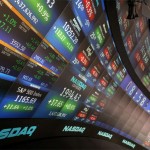 The financial industry has been one of the more enthusiastic exponents of automation in recent years, especially on the trading floor, where algorithmic trading is now commonplace. Indeed, Commerzbank have been outspoken about their desire to automate 80% of its processes in the coming years.
The financial industry has been one of the more enthusiastic exponents of automation in recent years, especially on the trading floor, where algorithmic trading is now commonplace. Indeed, Commerzbank have been outspoken about their desire to automate 80% of its processes in the coming years.
A sign of the progress being made comes via a recent paper published by the School of Business and Economics at Friedrich-Alexander-Universität Erlangen-Nürnberg (FAU). It shows the potential for algorithms to make extremely profitable investment decisions.
When the algorithm was applied to members of the S&P 500 between 1992 and 2015, the picks generated double digit annual returns, with a particular strength during times of economic turmoil.
“Equity markets exhibit complex, often non-linear dependencies,” the team say. “However, when it comes to selecting stocks, established methods are mainly modelling simple relationships. For example, the momentum effect only focuses on a stock’s return over the past months and assumes a continuation of that performance in the months to come. We saw potential for improvements.”
The researchers used a combination of deep learning, gradient boosting and random forests to generate daily predictions for every stock in the S&P 500 during the time period.
Each method was trained using 180 million different data points, with the algorithms developing knowledge of a complex function that described the relationship between the price-based features of the stock, and its future performance, with impressive results.
Man and machine
Despite these interesting examples, the use of AI to pick stocks remains relatively rare. One of the more interesting funds is San Francisco based company Numerai. The company, which was founded in 2015 launched its first fund this autumn. It takes financial data and encrypts it to turn it into a math problem and avoid some of the biases that can creep into AI algorithms.
They then run a two-stage competition using the data to try and find the best algorithms. It’s estimated that a few thousand data scientists compete each week, with those successful in the first round earning cryptocurrency and those successful in the second round winning cash prizes. The company uses the results from this process to help them to pick which stocks to invest in.
It’s an interesting mixture of crowdsourcing and AI and underlines the reality that man and machine can work effectively together, and often work best when they do work alongside one another.